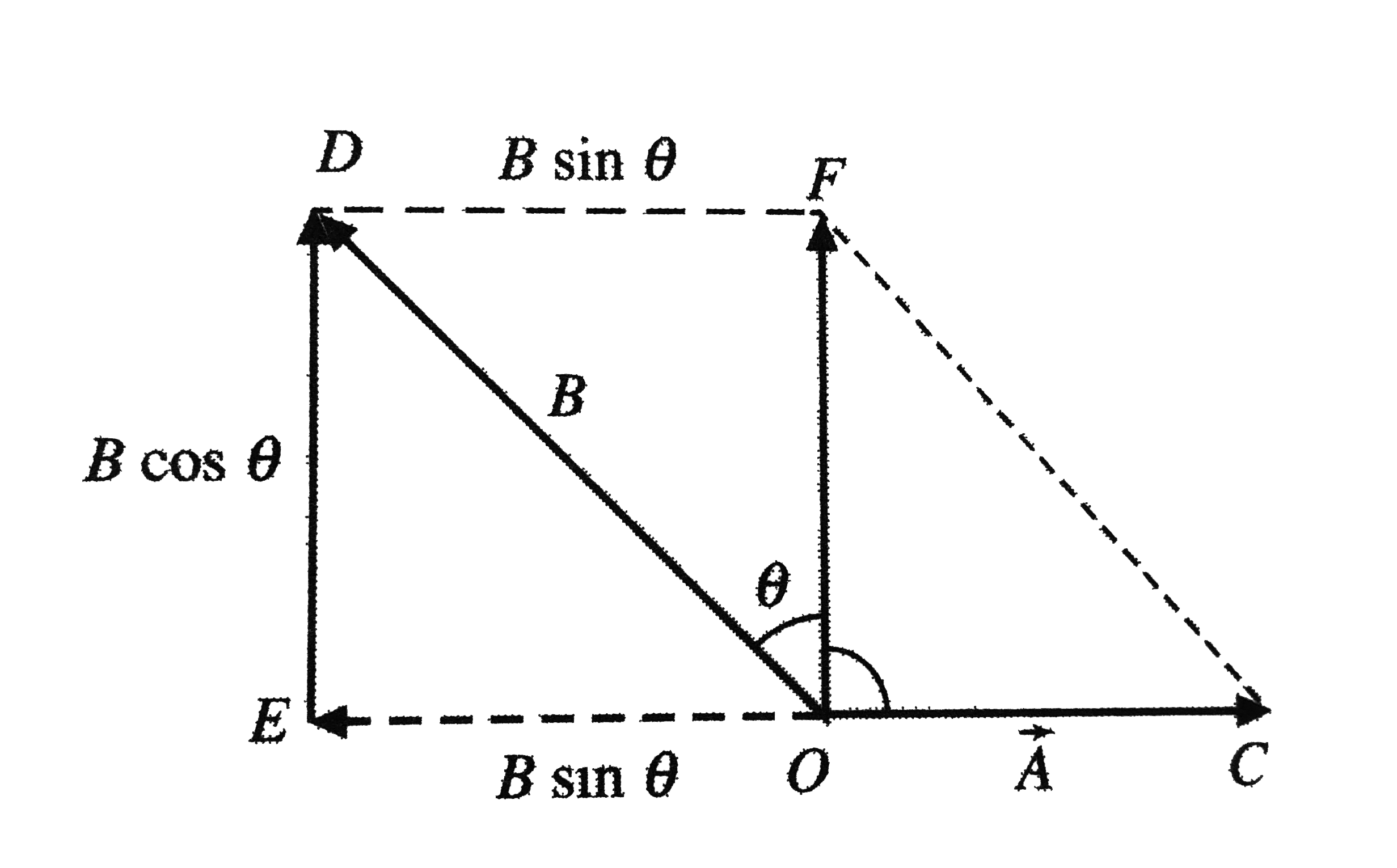Show that the area of the triangle contained between the →aand→b is is one half of the magnitude of →a×→b.
To show that the area of the triangle formed by vectors a and b is half of the magnitude of the cross product of a and b, we can follow these steps:
1. Understanding the Vectors:
Let vectors a and b originate from the same point. The triangle formed by these vectors has its vertices at the origin, the tip of vector a, and the tip of vector b.
2. Area of the Triangle:
The area A of a triangle can be calculated using the formula:
A=12×base×height
In our case, we can take the base as the length of vector a and the height as the perpendicular distance from the tip of vector b to the line extending along vector a.
3. Identifying the Height:
The height can be expressed in terms of the angle θ between vectors a and b. The height h from the tip of vector b to the line along vector a is given by:
h=|b|sin(θ)
where |b| is the magnitude of vector b.
4. Substituting into the Area Formula:
Now substituting the base and height into the area formula:
A=12×|a|×|b|sin(θ)
5. Using the Cross Product:
The magnitude of the cross product of vectors a and b is given by:
|a×b|=|a||b|sin(θ)
Therefore, we can rewrite the area of the triangle as:
A=12|a×b|
6. Conclusion:
Thus, we have shown that the area of the triangle formed by vectors a and b is:
A=12|a×b|
Let vectors a and b originate from the same point. The triangle formed by these vectors has its vertices at the origin, the tip of vector a, and the tip of vector b.
The area A of a triangle can be calculated using the formula:
A=12×base×height
In our case, we can take the base as the length of vector a and the height as the perpendicular distance from the tip of vector b to the line extending along vector a.
The height can be expressed in terms of the angle θ between vectors a and b. The height h from the tip of vector b to the line along vector a is given by:
h=|b|sin(θ)
where |b| is the magnitude of vector b.
Now substituting the base and height into the area formula:
A=12×|a|×|b|sin(θ)
The magnitude of the cross product of vectors a and b is given by:
|a×b|=|a||b|sin(θ)
Therefore, we can rewrite the area of the triangle as:
A=12|a×b|
Thus, we have shown that the area of the triangle formed by vectors a and b is:
A=12|a×b|
Topper's Solved these Questions
- BOOK - MODERN PUBLICATIONCHAPTER - SYSTEMS OF PARTICLES AND ROTATIONAL MOTIONEXERCISE - NCERT FILE ( NCERT (ADDITIONAL EXERCISES) )12videos
SYSTEMS OF PARTICLES AND ROTATIONAL MOTION
- BOOK - MODERN PUBLICATIONCHAPTER - SYSTEMS OF PARTICLES AND ROTATIONAL MOTIONEXERCISE - NCERT FILE (NCERT EXEMPLAR PROBLEMS (OBJECTIVES QUESTIONS) (MULTIPLE CHOICE QUESTIONS (TYPE-I))13videos
SYSTEMS OF PARTICLES AND ROTATIONAL MOTION
- BOOK - MODERN PUBLICATIONCHAPTER - SYSTEMS OF PARTICLES AND ROTATIONAL MOTIONEXERCISE - PROBLEMS TOUGH & TRICKY8videos
SYSTEMS OF PARTICLES AND ROTATIONAL MOTION
- BOOK - MODERN PUBLICATIONCHAPTER - PHYSICAL WORLD EXERCISE - Revision exercises (Long answer questions)6videos
PHYSICAL WORLD
- BOOK - MODERN PUBLICATIONCHAPTER - THERMAL PROPERTIES OF MATTEREXERCISE - CHAPTER PRACTICE TEST15videos
THERMAL PROPERTIES OF MATTER
Similar Questions
Knowledge Check
- Question 1 - Select One
The angle between (→A×→B) and (→B×→A) is :
AzeroBπCπ/4D2π/3 - Question 2 - Select One
If the angle between the vectors →aand→b is π3 and the area of the triangle with adjacemnt sides parallel to →aand→b is 3 is
A√3B2sqrt3C4sqrt3D√32 - Question 3 - Select One
The resultant of two vectors →A and →B is perpendicular to the vector →A and its magnitude is equal to half of the magnitude of the vector →B. Find out the angles between →A and →B.
 .A120B90C60D150
.A120B90C60D150
Let →a,→band→c be unit vector such that →a+→b−→c=0. If the area of triangle formed by vectors →aand→b is A, then what is the value of 4A2 ?
View SolutionThe resultant of two vectors →A and →B is perpendicular to →A and equal to half of the magnitud of →B. Find angle between →B and →B?
View SolutionThe resultant of two vectors →A and →b is perpendicular to the vector →A and its magnitude is equal to half the magnitude of vector →B. The angle between →A and →B is
View SolutionIf the area of a triangle of sides →A&→B is equal to AB4, then find the acute angle between →A&→B.
View SolutionIf →A+→B=→C, then magnitude of →B is
View Solution

